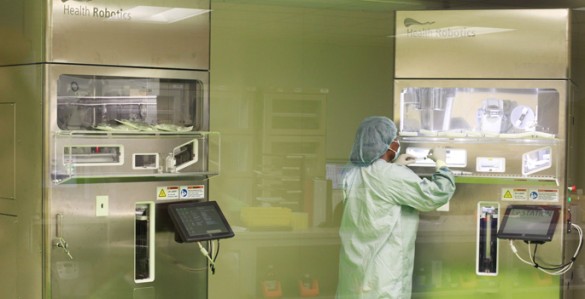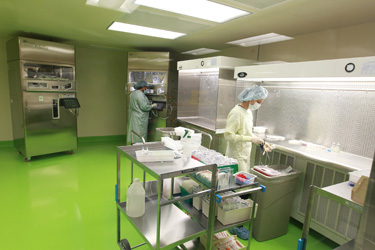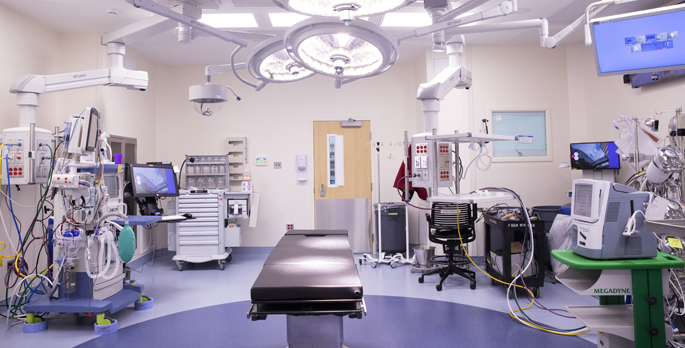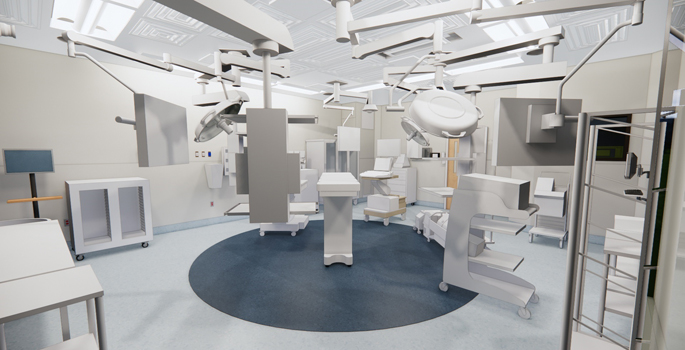
The Monroe Carell Jr. Children’s Hospital at Vanderbilt will begin using a new state-of-the-art automated robotic system in June to prepare intravenous and single-use syringe medications for inpatients, making it the first children’s hospital in Tennessee to implement the technology.
The two new i.v.STATION robots ensure quality medications are efficiently produced in-house in a fully enclosed, sterile environment, all to protect the health of the patient. They were installed as part of a six-month renovation and upgrade to Children’s Hospital’s inpatient pharmacy. Children’s Hospital is one of a small group of hospitals across the country investing in this technology, and one of only three in the Southeast.
“Our pediatric pharmacy team has always done an excellent job of ensuring all of our patients, from the tiniest neonates to our teenage patient population, have the medications they need to get well,” said Luke Gregory, chief executive officer of Children’s Hospital.
“The i.v.STATION robots will only augment the services already provided by a team devoted to delivering quality and safe care with a personalized approach. As Middle Tennessee’s only freestanding children’s hospital dedicated to serving all children, we are pleased to add this advanced technology to our pharmaceutical services.”
Pharmacists and pharmacy technicians often have to perform sterile compounding, creating personalized dosages and strengths of medications for their pediatric patients. Traditionally, that is done manually by a person, said Elizabeth Humphreys, Pharm.D., director of Pharmacy at Children’s Hospital.
“We do a significant amount of compounding in pediatrics because the doses that are packaged by manufacturers are for adults, not for babies or for children,” Humphreys said. “The robots will enable us to perform the dilution process without much manual manipulation. The robot will make a product that is labeled and has a bar code on it, and that will all happen without a person touching it, and that is a tremendous safety feature.”
The robots employ best practices of ready-to-administer doses and reduce potential errors sometimes seen with manual, human manipulation of sterile products used for IVs.

“Rigorous processes for cleaning and garbing are followed to ensure that all supplies, equipment, medications and people are as clean as possible prior to entering the “clean rooms” where the robots are housed,” said Stacey Kuboske, Pharm.D., M.S., Pharmacy sterile products supervisor. “The clean rooms are an environment where temperature, humidity and particles are tightly controlled.”
The medications are loaded into the robot along with information about what product and formulation is needed.
As an added safety measure, the robots read the lot number and expiration date of a medication by scanning product bar codes.
“It’s about the safety and the consistent practice,” Humphreys noted. “The robot doesn’t sneeze, it doesn’t come into the building with particles on its clothes. You’ve got those robots that stay there and never leave. Their risks of getting contaminated are very low.”
The i.v.STATION robots will initially be used to create single-use syringes for operating room medication in pediatric-appropriate doses, eliminating the need for manual dilution. Other IV medications that require compounding will also be generated with the robot with various drugs being introduced in to the production process in five phases over the next year.















